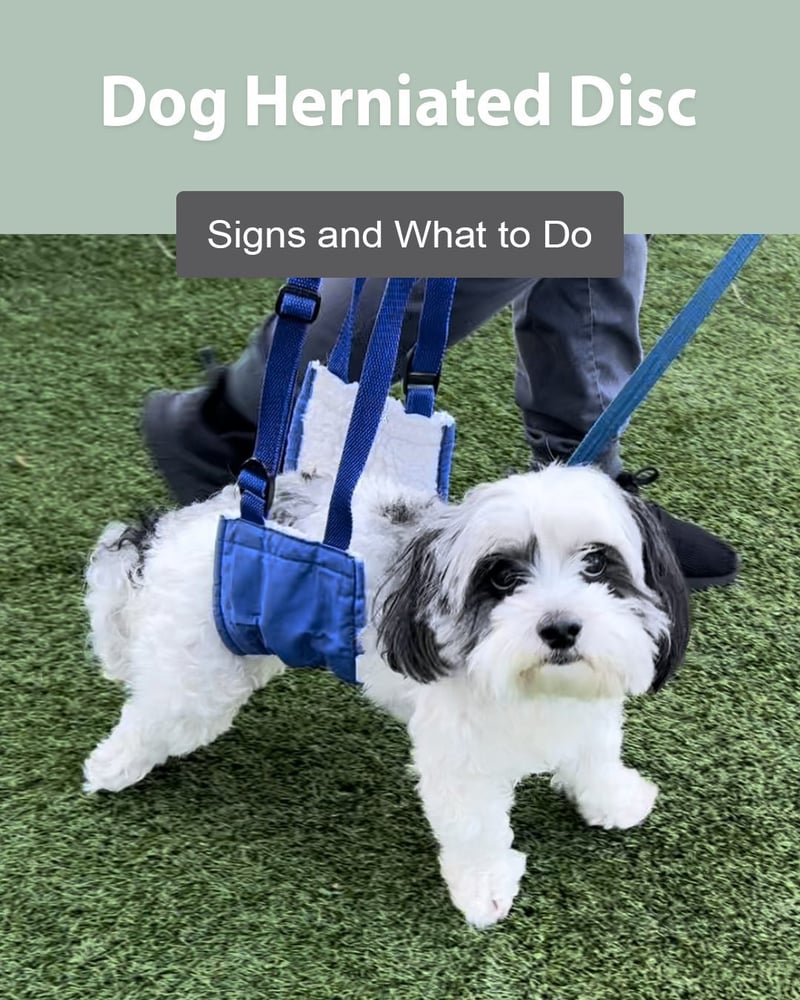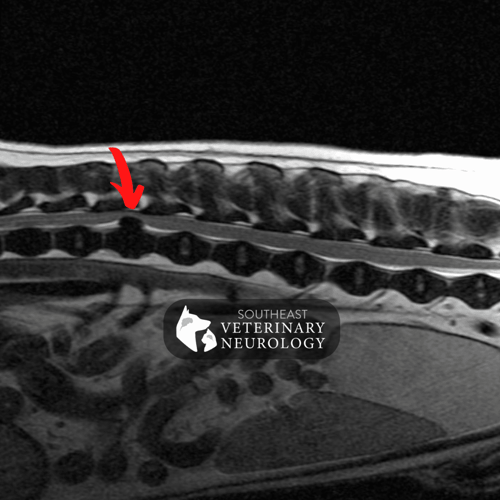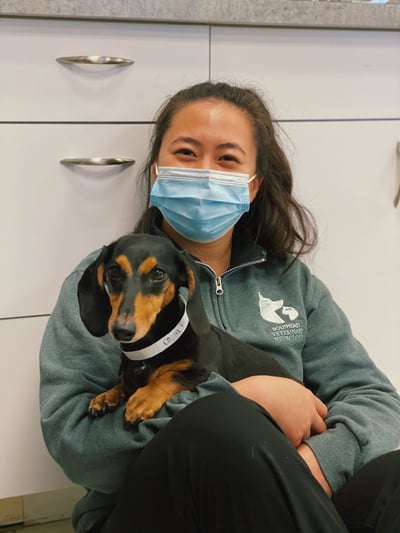Dog Herniated Disc: Signs and What to Do
A herniated disc is actually the number one spinal cord problem seen in dogs. The good news is that the chances of your dog making a full recovery can be as high as 95%. However, without timely treatment, it is possible for a herniated disc to cause permanent spinal cord damage. Therefore, it’s a good idea for you to be familiar with possible signs of a herniated disc in your dog.

Dog Herniated Disc: Causes
Intervertebral disc disease (IVDD) is a degenerative condition characterized by the breakdown of the protective discs that separate each vertebrae. When these cushioning discs degenerate, they can herniate, putting pressure on your dog’s spinal cord. Spinal cord compression causes pain and other serious neurological signs in dogs.
The normal canine aging process can cause IVDD and herniated discs in dogs, but short-legged (chondrodystrophic) breeds are more likely to develop these problems earlier in life.
Some of the dogs most at-risk for herniated discs are:
- French Bulldogs
- Dachshunds
- Pekingese
- Shih Tzus
- Beagles
Dog Herniated Disc: Signs
Signs your dog has a herniated disc can vary from discomfort to paralysis. Here are some signs that your dog needs prompt veterinary attention:
- Arched back
- Lowered head
- Stiff neck or limbs
- Shivering, shaking, or muscles spasms
- Hesitant to move
- Vocalizing when touched
- Incoordination or weakness when walking
- Dragging of the paws
- Unable to walk
- Paralysis
- Loss of sensation in the toes
The severity of your dog’s herniated disc is assessed using a grading scale of 1-5:
- Grade 1: Your dog can walk and is only experiencing pain, without any other symptoms.
- Grade 2: There is weakness in one or multiple limbs, but your dog can still walk.
- Grade 3: Your dog cannot walk but can still move its limbs.
- Grade 4: Your dog is paralyzed but can still feel its toes.
- Grade 5: Your dog is paralyzed and CANNOT feel its toes.
It’s important to note that, even though there are five defined levels of severity, it is possible for your dog to exhibit signs of an advanced grade without ever having shown signs of a lower grade. Clinical signs of a herniated disc in dogs do not always follow a linear path.
Dog Herniated Disc: What to Do
If you notice any of these herniated disc signs, restrict your dog to crate rest until your dog can be seen by a veterinary neurologist. If your dog has already lost the ability to walk, this is an emergency situation; do not delay. In fact, Southeast Veterinary Neurology is open 24 hours a day, because each passing hour is critical to your dog’s chances of recovery.
A veterinary neurologist will begin by performing physical and neurological examinations. If it is suspected that your dog has a herniated disc, advanced imaging of the spine will be recommended to rule out other neurological conditions with similar presentations. MRI (magnetic resonance imaging) is the only way to definitively diagnose your dog’s herniated disc.

Dog Herniated Disc: Treatment
Depending mostly on the severity of clinical signs, it will be recommended that your dog’s herniated disc be treated either medically or surgically.
Medical management consists of a combination of cage rest with pain medication, anti-inflammatories, and muscle relaxers, which can be effective for first-time sufferers in the early stages.
However, surgical intervention may be required to relieve spinal cord compression if your dog does not respond to more conservative treatment, is showing signs of an advanced stage, or is having recurrent episodes.
In any case, the sooner your dog’s herniated disc is treated, the better the outcome. We recommend contacting a veterinary neurologist at the first sign of trouble. This will not only give you the best possible outcome, but it will also rule out other neurological diseases that can look like a herniated disc. The thing about neurological conditions is that many of them share similar clinical signs, yet have very different treatment paths and prognoses.
Call Southeast Veterinary Neurology to Treat Your Dog’s Herniated Disc
Dr. Alyssa Flores, Neurology Resident at Southeast Veterinary Neurology, wraps it all up by remarking, “Every day, dogs impress us with their resilience. It’s amazing how swiftly and completely so many of them can overcome serious spinal cord injury from a herniated disc when provided with the appropriate care. But it is critical that prompt and precise diagnostics and treatments are provided in order to allow them that chance to heal.”

Schedule a consultation online or call any of our locations in Miami, Boynton Beach, Jupiter or Virginia Beach right now for more information. Southeast Veterinary Neurology is knowledgeable, experienced, and available to accurately, expertly, and compassionately treat your dog’s herniated disc.